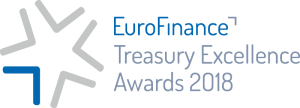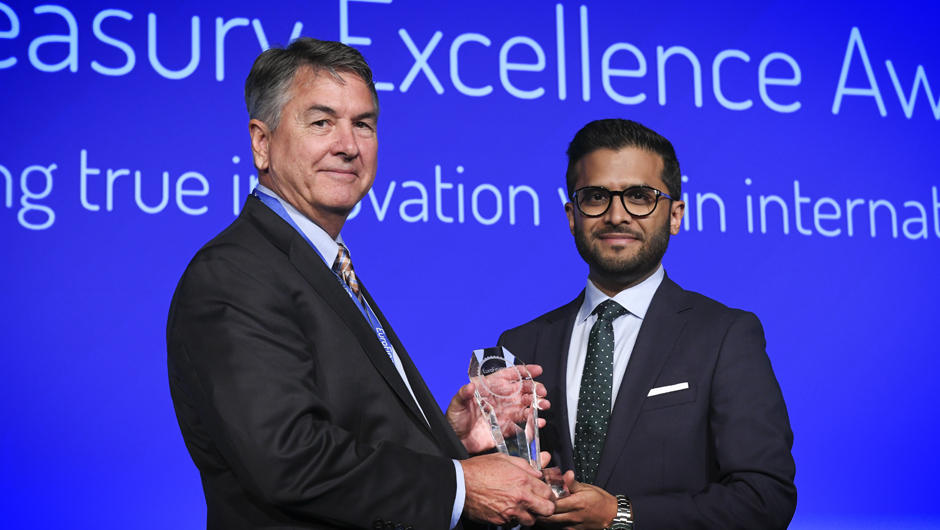
Award for treasury re-engineering: Open Text

Years of growth and acquisitions had left OpenText with a tangle of bank relationships and little cash visibility. This was re-engineered to free up $25 million in capital. Bija Knowles reports.
By its own admission, the Canadian enterprise data management software firm OpenText, is an acquisitive company. But rapid expansion brings with it additional banking relationships and accounts. These left the group treasury struggling to manoeuvre cash and liquidity efficiently. OpenText’s senior global treasury director, Jonathan Burkhead, was deeply troubled by the opaque structure, which was not only labour-intensive but risky. He knew something had to be done. “After a couple of the larger acquisitions, we reached a tipping point where we just couldn’t manage our cash effectively. We had over 120 banks in the network and over 420 bank accounts to try to look at every day,” said Burkhead, who received an award for treasury re-engineering at EuroFinance’s International Treasury Management conference in Geneva, Switzerland.

Burkhead touched on some of the exasperating difficulties the treasury faced: “We had no coherent bank strategy to take on new acquisitions. We struggled to manage the many users that accessed the bank systems. The risk of fraud was higher: we just didn’t have the visibility and control that we needed.” The company was also paying higher bank fees, while KYC and AML requirements had become onerous.
Since it was founded in 1991, OpenText has spent $6.2 billion-worth of capital on 60 acquisition deals. Fifteen of these, worth $4.8 billion, were completed in the past six years. To counter this expansion, the company has had to take action to simplify its bank relationships, accounts, cash pooling structures and legal entities. Through ruthless cutting and restructuring, Burkhead’s team has managed to extract $25 million dollars of working capital, generate savings in excess of $2 million a year and create operating efficiencies of more than $400,000 a year. Just as importantly, the company is now able to access cash for acquisitions within days.
The first step towards simplification began in 2013, with the implementation of a single treasury management system (TMS). Burkhead said treasury’s vision was “a single source of truth, a place we could go for all our bank transactions”. They chose Kyriba’s software as a service (SaaS) model because “we liked the SaaS model, we also liked that we didn’t need to find internal IT resources, given the scarcity.”
Automation of processes and reporting were key goals for Burkhead and his team, who aimed to simplify their daily balances and statements, as well as streamline payments and forecasting for the company’s 155 entities: “Our requirements were not that complex or difficult, there were just a lot of moving parts and a lot of banks to connect to. But basically we just wanted to reduce the amount of time it took to mobilise cash for acquisitions in the future and for investments.”

The second leg of the transformation involved rationalising OpenText’s banking network. The request for proposals (RFP) process required careful consideration as many of the banks were also OpenText customers. Five main relationship banks were chosen for each of the company’s main operating regions (JPMorgan in the US, Citi in EMEA, HSBC in APAC, RBC in Canada, and Bank of America for Latin America). The end result reduced the banks from 120 to just 30. As for bank accounts, the company began the transformation process with more than 420 and eventually reduced these to 190. Burkhead was pleased to admit that this process brought huge benefits: “We created a bank strategy with which we can integrate our systems and take in future acquisitions. We reduced administration by eliminating banks and accounts, we reduced costs by leveraging our volumes over fewer banks, we improved control by reducing bank accounts and getting good visibility, as well as reducing the amount of fraud. We’re expecting to save over a $1.5 million now as a result of this.”
It was at this point that OpenText decided to use one of its own products, Trading Grid, as a payments hub to streamline accounts payable (AP). As Burkhead noted, his treasury team now uses Trading Grid to “get daily balances and statements, map and deliver our payment files to the banks, integrate with Kyriba and SAP, and connect to Swift”.
The third part of OpenText’s journey was to put in place a streamlined pooling structure. In Europe, Middle East and Africa (EMEA) the company was able to set up four header accounts for each of their four main currencies: euro, sterling, US dollar and Swiss franc. About 65 bank accounts are now zero-balanced each day into one of the four header accounts, making cash more readily available at short notice. Burkhead explained why this is so crucial for OpenText: “By pooling we achieved a simplification of cash management: it’s easier to manage our cash for acquisitions in a matter of days compared to weeks or months previously. We’ve been able to smooth out the cash variability in the accounts and extracted $25 million dollars of working capital, which we can now use for acquisitions or investments.”